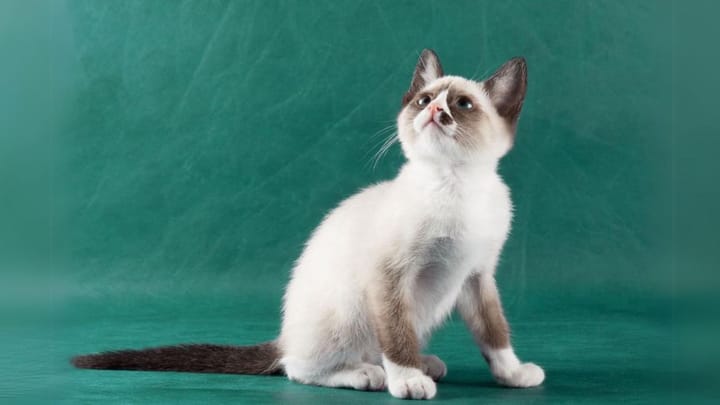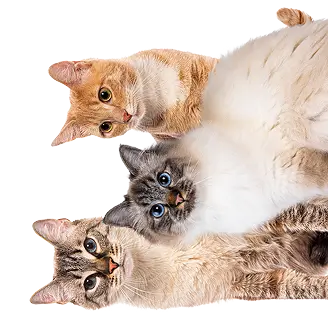Snowshoe


Inspired by cats from the Victorian era, the Snowshoe is an American cat whose white paws look like little shoes for walking in the snow, hence their name. They remain uncommon today, but are gaining in popularity year after year, thanks to being such great companions to share your life with. They are loquacious and endearing, and they slot well into family life. And they’ll do whatever they can to get their way!
|
Life expectancy |
The Snowshoe has a life expectancy of between 12 and 15 years |
|
Temperament |
|
|
Adult size |
Female
Between 12 and 14 in
Male
Between 12 and 14 in
|
|
Adult weight |
Female
Between 7 and 11 lb
Male
Between 7 and 13 lb
|
|
Coat colour
Black / seal, blue / slate-grey, chocolate, lilac, cinnamon, fawn, red, white All colours are accepted, although seal and chocolate are the most common. |
Black Brown White Red Blue |
|
Type of coat
Short |
Short |
|
Eye colour
Blue, aquamarine |
Blue
|
|
Purchase price |
The Snowshoe costs approximately 200£ |
The famous Grumpy Cat, who caused an internet sensation in recent years, may well have Snowshoe ancestors. This particular cat suffers from feline dwarfism.
More details about the Snowshoe
Snowshoe: Origins and history
In the late seventies, an American farmer set out to create a white-footed Siamese breed, as she had seen in Victorian-era images. To achieve this, she crossed Siameses with bicoloured American Shorthairs and probably some Burmeses too.
It was in 1983 that the first feline association (CFA) recognized the Snowshoe. They are still a very rare breed, although they are slowly gaining popularity.
Physical characteristics of the Snowshoe
Average in size, Snowshoes are known for their slender appearance and their strong musculature. They have a triangular head with rounded sides, and their muzzle and ears are medium in size.
Their short coat is soft to the touch and the colour pattern is the colourpoint kind, although there are two variations: one has a white inverted ‘V’ on their face and the other has four white paws.
These cats sit tall on their legs, and show all of the elegance of their ancestor, the Siamese.
Snowshoe: Characteristics
Snowshoe: Behaviour
Breed compatibility Snowshoe
Snowshoe: Purchase price
On average, you’ll need to spend approximately £200 to buy a Snowshoe kitten. The price usually varies depending on rarity, lineage, breeding, age and sex. For your monthly budget you should allow at least £25 per month to ensure you cater to their dietary and medical needs so that they stay in good health.
Snowshoe: Shedding
Light
These cats shed very little.
Snowshoe: Grooming
Grooming is very easy with this breed and usually just consists of a brush from time to time.
Snowshoe: Health
The average life expectancy of a Snowshoe is between 12 and 15 years, but some may live much longer.
Their short, dense fur gives them some level of protection against the cold, but only to a point, and these cats are not considered to be particularly resistant to extreme temperatures.
There are several risk factors for obesity among cats, such as age, environment, diet and the cat’s level of activity. This breed has no particular predisposition to weight gain since they are quite energetic, so the only real risk of becoming overweight occurs when they don’t get the exercise they need.
Since Snowshoes are so rare, little data exists on their individual health. Although it is generally recognised that this breed has good physiological health, an annual medical checkup is recommended, as they may potentially suffer from the same diseases as other domestic cats, such as oral diseases for example.
Despite the relative rarity of the breed, only pairings between Snowshoes are allowed.





